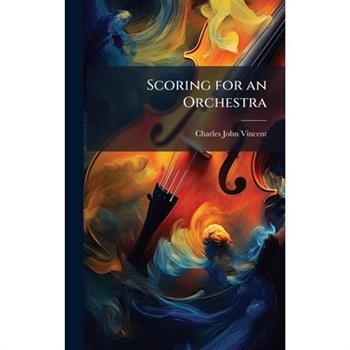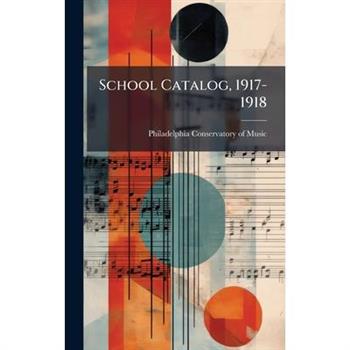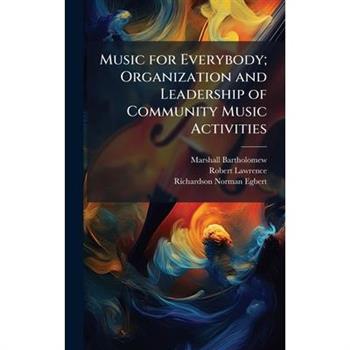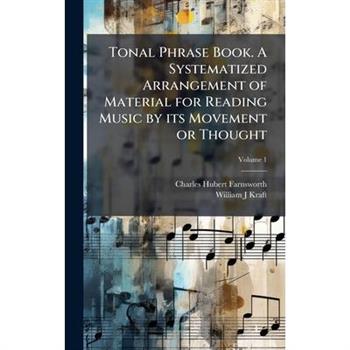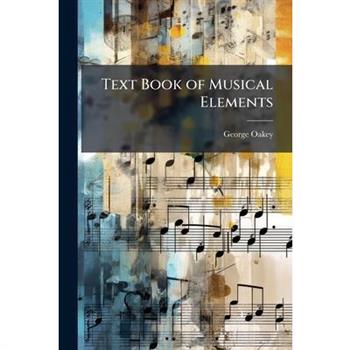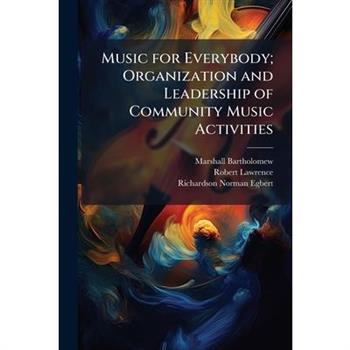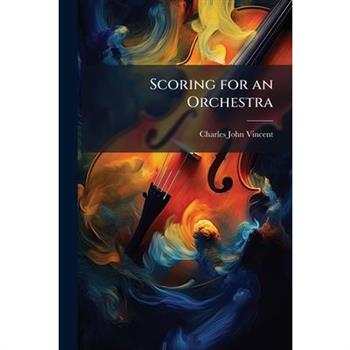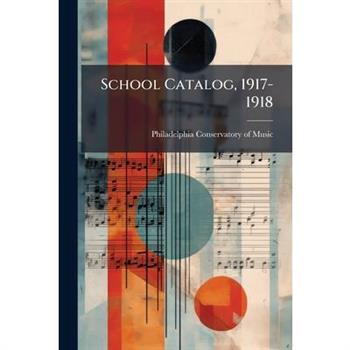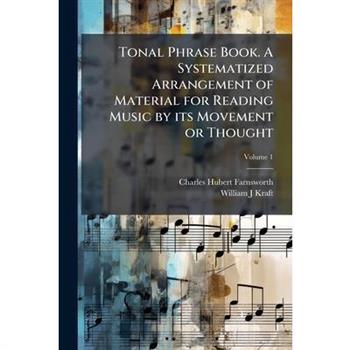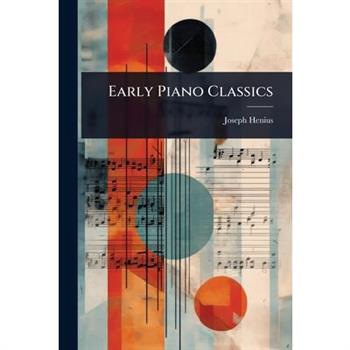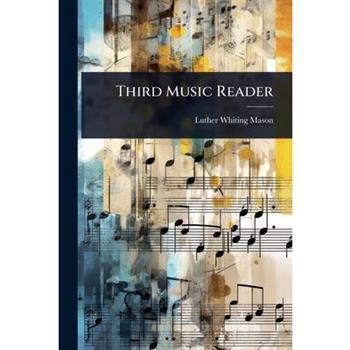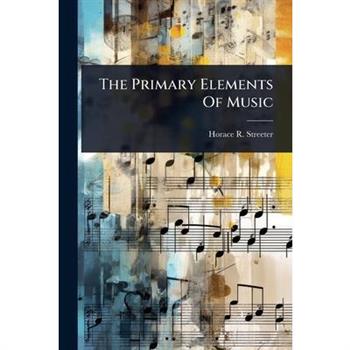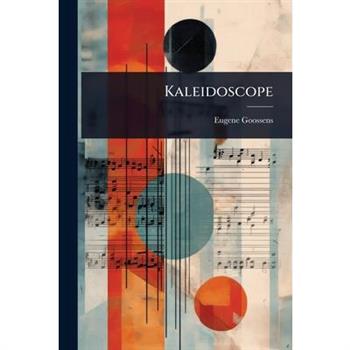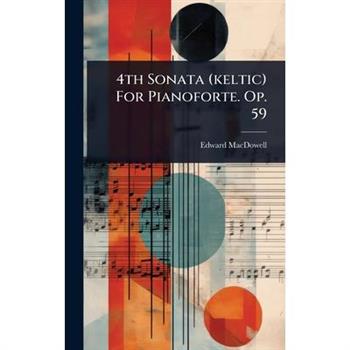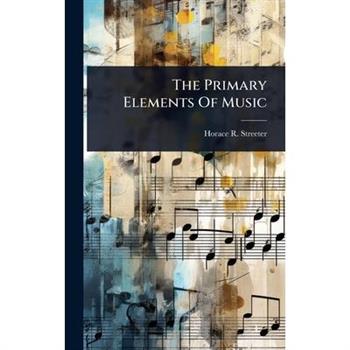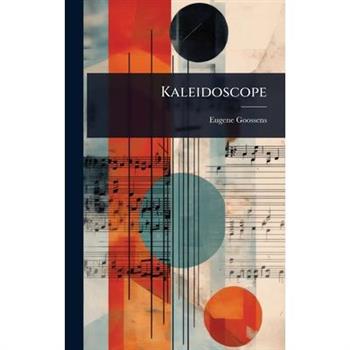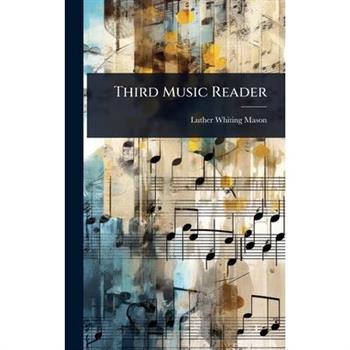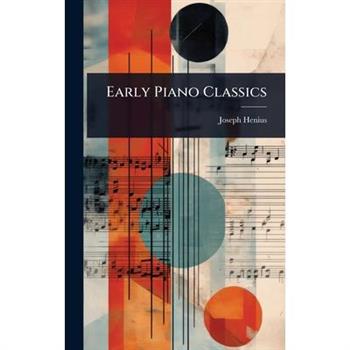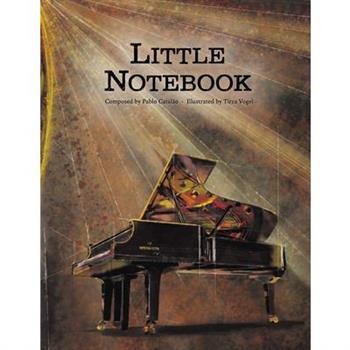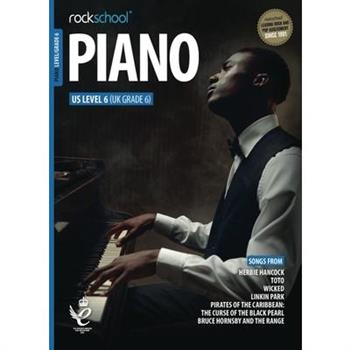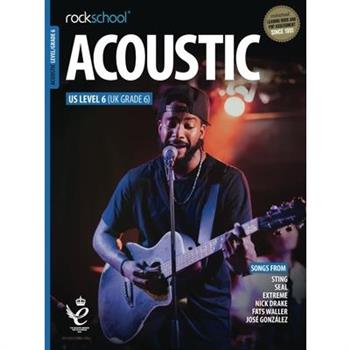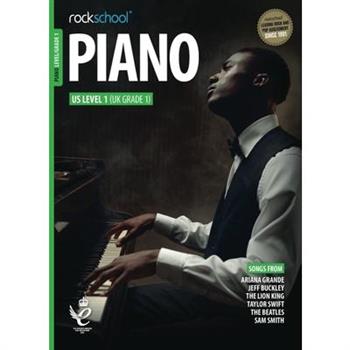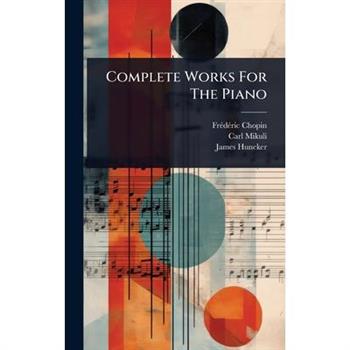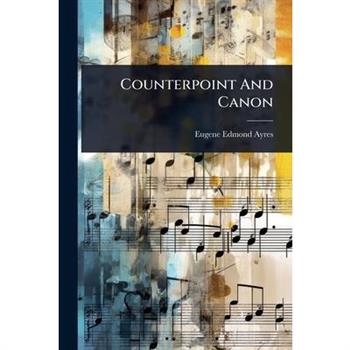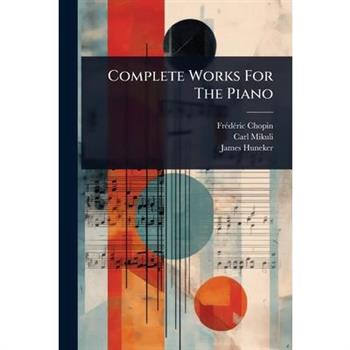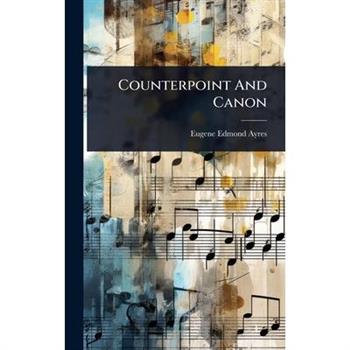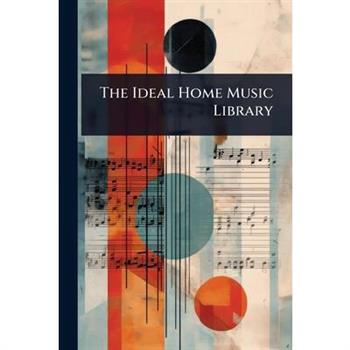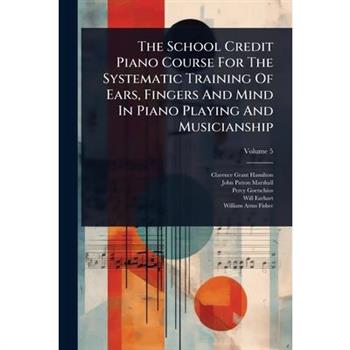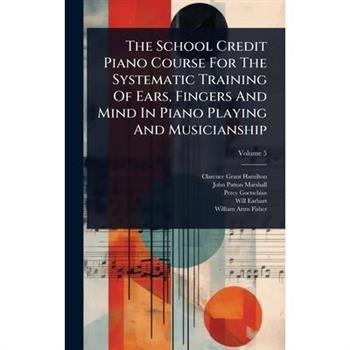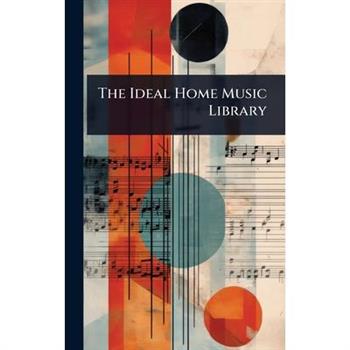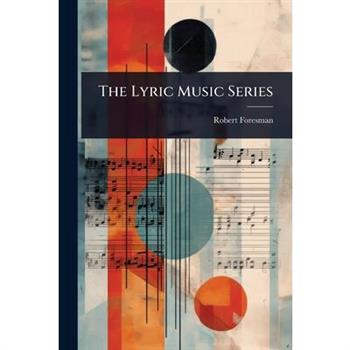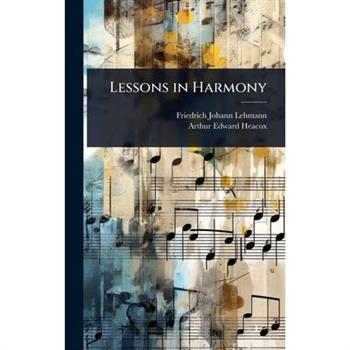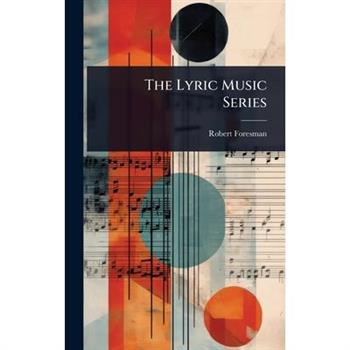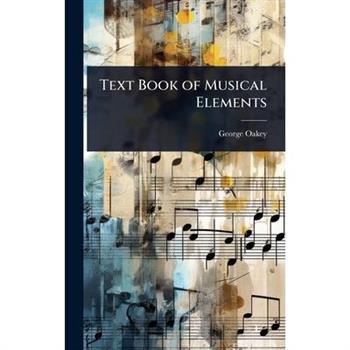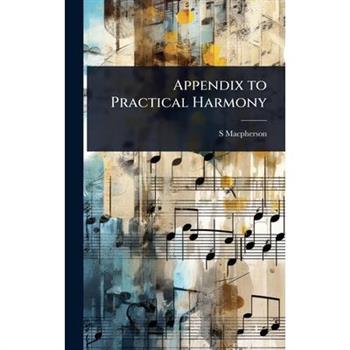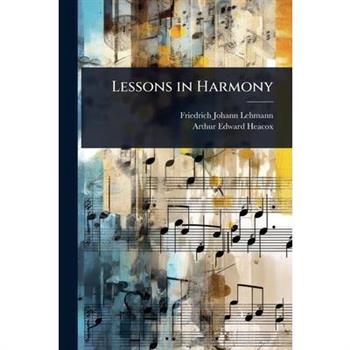Catalogue 1946-1951
This catalogue from the Curtis Institute of Music documents the period between 1946 and 1951. It provides a comprehensive overview of the institute's activities, including faculty, students, performances, and curricula. A valuable resource for music scholars, alumni, and anyone interested in the history of classical music education in America, this catalogue offers a glimpse into the post-war era at one of the world's premier conservatories. Explore the rich heritage and tradition of the Curtis Institute through this detailed historical record. Discover the names of emerging talents and renowned instructors who shaped the landscape of classical music during this pivotal time. "Catalogue 1946-1951" serves as an essential reference for understanding the evolution of musical training and performance.This work has been selected by scholars as being culturally important, and is part of the knowledge base of civilization as we know it. This work was reproduced from the original artifact, and remains as true to the original work as possible. Therefore, you will see the original copyright references, library stamps (as most of these works have been housed in our most important libraries around the world), and other notations in the work.This work is in the public domain in the United States of America, and possibly other nations. Within the United States, you may freely copy and distribute this work, as no entity (individual or corporate) has a copyright on the body of the work.As a reproduction of a historical artifact, this work may contain missing or blurred pages, poor pictures, errant marks, etc. Scholars believe, and we concur, that this work is important enough to be preserved, reproduced, and made generally available to the public. We appreciate your support of the preservation process, and thank you for being an important part of keeping this knowledge alive and relevant.
Catalogue 1942-1946
A comprehensive catalogue from the Curtis Institute of Music, spanning the years 1942-1946. This catalogue offers a glimpse into the curriculum, faculty, and student body of one of the world's leading music conservatories during a pivotal period. It provides valuable information for researchers, alumni, and anyone interested in the history of music education and the Curtis Institute's enduring legacy. Explore the course offerings, faculty biographies, and student rosters that defined the Curtis experience during these years. "Catalogue 1942-1946" serves as a historical document, capturing a unique moment in the Institute's history and the broader landscape of classical music in America. A must-have resource for music historians and those connected to the Curtis Institute.This work has been selected by scholars as being culturally important, and is part of the knowledge base of civilization as we know it. This work was reproduced from the original artifact, and remains as true to the original work as possible. Therefore, you will see the original copyright references, library stamps (as most of these works have been housed in our most important libraries around the world), and other notations in the work.This work is in the public domain in the United States of America, and possibly other nations. Within the United States, you may freely copy and distribute this work, as no entity (individual or corporate) has a copyright on the body of the work.As a reproduction of a historical artifact, this work may contain missing or blurred pages, poor pictures, errant marks, etc. Scholars believe, and we concur, that this work is important enough to be preserved, reproduced, and made generally available to the public. We appreciate your support of the preservation process, and thank you for being an important part of keeping this knowledge alive and relevant.
Catalogue 1946-1951
This catalogue from the Curtis Institute of Music documents the period between 1946 and 1951. It provides a comprehensive overview of the institute's activities, including faculty, students, performances, and curricula. A valuable resource for music scholars, alumni, and anyone interested in the history of classical music education in America, this catalogue offers a glimpse into the post-war era at one of the world's premier conservatories. Explore the rich heritage and tradition of the Curtis Institute through this detailed historical record. Discover the names of emerging talents and renowned instructors who shaped the landscape of classical music during this pivotal time. "Catalogue 1946-1951" serves as an essential reference for understanding the evolution of musical training and performance.This work has been selected by scholars as being culturally important, and is part of the knowledge base of civilization as we know it. This work was reproduced from the original artifact, and remains as true to the original work as possible. Therefore, you will see the original copyright references, library stamps (as most of these works have been housed in our most important libraries around the world), and other notations in the work.This work is in the public domain in the United States of America, and possibly other nations. Within the United States, you may freely copy and distribute this work, as no entity (individual or corporate) has a copyright on the body of the work.As a reproduction of a historical artifact, this work may contain missing or blurred pages, poor pictures, errant marks, etc. Scholars believe, and we concur, that this work is important enough to be preserved, reproduced, and made generally available to the public. We appreciate your support of the preservation process, and thank you for being an important part of keeping this knowledge alive and relevant.
Duet Albums for Beginners
Duet Albums for Beginners, by Angela Diller and Kate Stearns Page, is designed to guide beginning musicians in the art of playing piano duets. This comprehensive instruction book offers a methodical approach to learning, emphasizing musicality and ensemble playing from the earliest stages. Diller and Page, renowned for their contributions to music education, provide clear, concise instructions and carefully selected pieces that build essential skills and foster a love for music. This volume is an invaluable resource for teachers and students alike, encouraging collaborative music-making and a deeper understanding of musical expression. Featuring a range of accessible and engaging duets, Duet Albums for Beginners remains a timeless guide for aspiring musicians embarking on their musical journey.This work has been selected by scholars as being culturally important, and is part of the knowledge base of civilization as we know it. This work was reproduced from the original artifact, and remains as true to the original work as possible. Therefore, you will see the original copyright references, library stamps (as most of these works have been housed in our most important libraries around the world), and other notations in the work.This work is in the public domain in the United States of America, and possibly other nations. Within the United States, you may freely copy and distribute this work, as no entity (individual or corporate) has a copyright on the body of the work.As a reproduction of a historical artifact, this work may contain missing or blurred pages, poor pictures, errant marks, etc. Scholars believe, and we concur, that this work is important enough to be preserved, reproduced, and made generally available to the public. We appreciate your support of the preservation process, and thank you for being an important part of keeping this knowledge alive and relevant.
The Magical Flutist
The Magical Flutist - Exercises for Tone and Technique was inspired by the tuition of the Finnish flute pedagogue Rainer Risberg. This intermediate level book includes detailed instructions, various exercises and fun images for improving your tone and technique. The exercises have been organized thematically, so that you can customize different practice sessions by choosing a couple of exercises from each chapter to meet your needs. Flutists all around Finland have had the pleasure of enjoying the captivating tuition of Rainer Risberg. The collection includes all the best exercises, tips and creative instructions to help you to create a beautiful tone and learn an effortless technique. The practice book is suitable for teaching material in flute lessons. It is also well suited for an intermediate level self-study.
Science of Tone Production
"Science of Tone Production" explores the art and science behind creating beautiful and resonant tones, particularly within the realm of instrumental music. Penned by Georges Antoine Brouillet, this work delves into the technical aspects of tone generation, offering insights valuable to both aspiring and seasoned musicians. It examines the physical and theoretical principles that underpin superior sound quality, providing a comprehensive guide to mastering tonal nuances. Readers will gain a deeper understanding of how to optimize their technique to achieve a richer, more expressive sound. This book is an essential resource for anyone seeking to elevate their musical performance through a scientific approach to tone production.This work has been selected by scholars as being culturally important, and is part of the knowledge base of civilization as we know it. This work was reproduced from the original artifact, and remains as true to the original work as possible. Therefore, you will see the original copyright references, library stamps (as most of these works have been housed in our most important libraries around the world), and other notations in the work.This work is in the public domain in the United States of America, and possibly other nations. Within the United States, you may freely copy and distribute this work, as no entity (individual or corporate) has a copyright on the body of the work.As a reproduction of a historical artifact, this work may contain missing or blurred pages, poor pictures, errant marks, etc. Scholars believe, and we concur, that this work is important enough to be preserved, reproduced, and made generally available to the public. We appreciate your support of the preservation process, and thank you for being an important part of keeping this knowledge alive and relevant.
Science of Tone Production
"Science of Tone Production" explores the art and science behind creating beautiful and resonant tones, particularly within the realm of instrumental music. Penned by Georges Antoine Brouillet, this work delves into the technical aspects of tone generation, offering insights valuable to both aspiring and seasoned musicians. It examines the physical and theoretical principles that underpin superior sound quality, providing a comprehensive guide to mastering tonal nuances. Readers will gain a deeper understanding of how to optimize their technique to achieve a richer, more expressive sound. This book is an essential resource for anyone seeking to elevate their musical performance through a scientific approach to tone production.This work has been selected by scholars as being culturally important, and is part of the knowledge base of civilization as we know it. This work was reproduced from the original artifact, and remains as true to the original work as possible. Therefore, you will see the original copyright references, library stamps (as most of these works have been housed in our most important libraries around the world), and other notations in the work.This work is in the public domain in the United States of America, and possibly other nations. Within the United States, you may freely copy and distribute this work, as no entity (individual or corporate) has a copyright on the body of the work.As a reproduction of a historical artifact, this work may contain missing or blurred pages, poor pictures, errant marks, etc. Scholars believe, and we concur, that this work is important enough to be preserved, reproduced, and made generally available to the public. We appreciate your support of the preservation process, and thank you for being an important part of keeping this knowledge alive and relevant.
Hide and Seek
Get ready for a playful musical adventure with Hide and Seek, an early intermediate piano solo in C minor that brings the classic childhood game to life! Bursting with character, this piece features lively staccato exchanges that mimic the quick footsteps and whispered giggles of kids darting from one hiding spot to another. The minor key adds a touch of mystery, while the rhythmic energy keeps things light and fun. Perfect for recitals, Hide and Seek by David Karp is sure to delight audiences and give young pianists a chance to shine with expression, precision, and a sense of mischief.
My Cat Sassy Frass
From the first measure, My Cat, Sassy Frass by Julie Ann Ballard weaves a mischievous melody that slinks and struts across the keyboard like a cat on a nighttime prowl. The swing feel keeps things rhythmically engaging, encouraging students to feel the beat rather than just count it. With its catchy motifs, subtle blues inflections, and moments of surprise, the piece reinforces key skills such as phrasing, hand coordination, and stylistic nuance---while never losing its sense of fun. Pianists will delight in bringing this spunky feline's personality to life.
[Catalog]
A fascinating glimpse into the world of 19th-century piano manufacturing, this catalog from Chickering & Sons showcases the company's offerings circa 1880. This resource provides insight into the craftsmanship, models, and technological advancements of pianos during this period. It is a valuable reference for historians, collectors, and anyone interested in the evolution of musical instruments. Explore the detailed descriptions and illustrations that highlight the elegance and innovation of Chickering pianos, revealing the company's commitment to quality and artistic design. This work has been selected by scholars as being culturally important, and is part of the knowledge base of civilization as we know it. This work was reproduced from the original artifact, and remains as true to the original work as possible. Therefore, you will see the original copyright references, library stamps (as most of these works have been housed in our most important libraries around the world), and other notations in the work.This work is in the public domain in the United States of America, and possibly other nations. Within the United States, you may freely copy and distribute this work, as no entity (individual or corporate) has a copyright on the body of the work.As a reproduction of a historical artifact, this work may contain missing or blurred pages, poor pictures, errant marks, etc. Scholars believe, and we concur, that this work is important enough to be preserved, reproduced, and made generally available to the public. We appreciate your support of the preservation process, and thank you for being an important part of keeping this knowledge alive and relevant.
Music and the Performing Arts in the Anthropocene
This book offers a series of thought-provoking essays about music and the performing arts viewed from current Anthropocene-aware perspectives. It will be of great interest to students and scholars in the humanities and social sciences, as well as a broader readership involved in art and environment policies.
[Catalog]
A fascinating glimpse into the world of 19th-century piano manufacturing, this catalog from Chickering & Sons showcases the company's offerings circa 1880. This resource provides insight into the craftsmanship, models, and technological advancements of pianos during this period. It is a valuable reference for historians, collectors, and anyone interested in the evolution of musical instruments. Explore the detailed descriptions and illustrations that highlight the elegance and innovation of Chickering pianos, revealing the company's commitment to quality and artistic design. This work has been selected by scholars as being culturally important, and is part of the knowledge base of civilization as we know it. This work was reproduced from the original artifact, and remains as true to the original work as possible. Therefore, you will see the original copyright references, library stamps (as most of these works have been housed in our most important libraries around the world), and other notations in the work.This work is in the public domain in the United States of America, and possibly other nations. Within the United States, you may freely copy and distribute this work, as no entity (individual or corporate) has a copyright on the body of the work.As a reproduction of a historical artifact, this work may contain missing or blurred pages, poor pictures, errant marks, etc. Scholars believe, and we concur, that this work is important enough to be preserved, reproduced, and made generally available to the public. We appreciate your support of the preservation process, and thank you for being an important part of keeping this knowledge alive and relevant.
Scoring for an Orchestra
"Scoring for an Orchestra" is a comprehensive guide to orchestration, offering insights into the art of arranging music for orchestral instruments. This book explores the principles of effective scoring, providing a theoretical foundation coupled with practical applications. Aspiring composers and arrangers will discover valuable techniques for creating rich, balanced, and expressive orchestral textures.Charles John Vincent's work serves as an essential resource for students and professionals seeking to master the intricacies of orchestration, ensuring its enduring relevance in the field of music education and composition.This work has been selected by scholars as being culturally important, and is part of the knowledge base of civilization as we know it. This work was reproduced from the original artifact, and remains as true to the original work as possible. Therefore, you will see the original copyright references, library stamps (as most of these works have been housed in our most important libraries around the world), and other notations in the work.This work is in the public domain in the United States of America, and possibly other nations. Within the United States, you may freely copy and distribute this work, as no entity (individual or corporate) has a copyright on the body of the work.As a reproduction of a historical artifact, this work may contain missing or blurred pages, poor pictures, errant marks, etc. Scholars believe, and we concur, that this work is important enough to be preserved, reproduced, and made generally available to the public. We appreciate your support of the preservation process, and thank you for being an important part of keeping this knowledge alive and relevant.
School Catalog, 1917-1918
A fascinating glimpse into music education at the dawn of the Jazz Age, this catalog from the Philadelphia Conservatory of Music offers a detailed overview of the school's programs, faculty, and student life during the academic year 1917-1918. "School Catalog, 1917-1918" provides valuable insights into the pedagogical approaches, musical repertoire, and cultural context of early 20th-century music training. Researchers and historians of music education, as well as those interested in the history of Philadelphia, will find this catalog a rich primary source. Discover the curriculum, the faculty, and the ethos of a leading music institution as it prepared students for careers in a rapidly changing world.This work has been selected by scholars as being culturally important, and is part of the knowledge base of civilization as we know it. This work was reproduced from the original artifact, and remains as true to the original work as possible. Therefore, you will see the original copyright references, library stamps (as most of these works have been housed in our most important libraries around the world), and other notations in the work.This work is in the public domain in the United States of America, and possibly other nations. Within the United States, you may freely copy and distribute this work, as no entity (individual or corporate) has a copyright on the body of the work.As a reproduction of a historical artifact, this work may contain missing or blurred pages, poor pictures, errant marks, etc. Scholars believe, and we concur, that this work is important enough to be preserved, reproduced, and made generally available to the public. We appreciate your support of the preservation process, and thank you for being an important part of keeping this knowledge alive and relevant.
Music for Everybody; Organization and Leadership of Community Music Activities
"Music for Everybody" offers guidance on organizing and leading community music activities. Written by Marshall Bartholomew, Robert Lawrence, and Norman Egbert Richardson, this vintage guide emphasizes the importance of accessible music-making for all. It provides practical advice on forming and managing musical groups, selecting appropriate repertoire, and fostering a welcoming environment for participants of all skill levels. This book is valuable for educators, community leaders, and anyone interested in promoting the joys of music within their communities. Discover how to create engaging musical experiences that enrich lives and build connections through the power of song.This work has been selected by scholars as being culturally important, and is part of the knowledge base of civilization as we know it. This work was reproduced from the original artifact, and remains as true to the original work as possible. Therefore, you will see the original copyright references, library stamps (as most of these works have been housed in our most important libraries around the world), and other notations in the work.This work is in the public domain in the United States of America, and possibly other nations. Within the United States, you may freely copy and distribute this work, as no entity (individual or corporate) has a copyright on the body of the work.As a reproduction of a historical artifact, this work may contain missing or blurred pages, poor pictures, errant marks, etc. Scholars believe, and we concur, that this work is important enough to be preserved, reproduced, and made generally available to the public. We appreciate your support of the preservation process, and thank you for being an important part of keeping this knowledge alive and relevant.
Tonal Phrase Book. A Systematized Arrangement of Material for Reading Music by its Movement or Thought
"Tonal Phrase Book, Volume 1" offers a systematized approach to understanding and reading music by focusing on its movement and underlying thought processes. Designed for students and musicians seeking a deeper comprehension of musical structure, this book presents a unique methodology for analyzing tonal phrases. By emphasizing the relationships between musical elements, readers can develop a more intuitive understanding of musical form and expression. Authored by Charles Hubert Farnsworth and William J. Kraft, this volume serves as an invaluable resource for anyone looking to enhance their musical literacy and analytical skills. Explore the intricacies of tonal music and unlock new levels of musical insight with this essential guide.This work has been selected by scholars as being culturally important, and is part of the knowledge base of civilization as we know it. This work was reproduced from the original artifact, and remains as true to the original work as possible. Therefore, you will see the original copyright references, library stamps (as most of these works have been housed in our most important libraries around the world), and other notations in the work.This work is in the public domain in the United States of America, and possibly other nations. Within the United States, you may freely copy and distribute this work, as no entity (individual or corporate) has a copyright on the body of the work.As a reproduction of a historical artifact, this work may contain missing or blurred pages, poor pictures, errant marks, etc. Scholars believe, and we concur, that this work is important enough to be preserved, reproduced, and made generally available to the public. We appreciate your support of the preservation process, and thank you for being an important part of keeping this knowledge alive and relevant.
Text Book of Musical Elements
"Text Book of Musical Elements" by George Oakey, originally published in 1886, provides a comprehensive exploration of fundamental music theory. This volume delves into the essential components of music, covering topics such as harmony, counterpoint, and the structure of musical forms. Designed as an instructional guide, the book offers detailed explanations and examples to aid students in understanding the building blocks of musical composition. Oakey's work presents a valuable resource for those interested in the theoretical underpinnings of music. It reflects the pedagogical approaches of the late 19th century and offers insights into the musical education of that era. Whether studied for historical context or as a practical guide to music theory, this text remains a significant contribution to the field.This work has been selected by scholars as being culturally important, and is part of the knowledge base of civilization as we know it. This work was reproduced from the original artifact, and remains as true to the original work as possible. Therefore, you will see the original copyright references, library stamps (as most of these works have been housed in our most important libraries around the world), and other notations in the work.This work is in the public domain in the United States of America, and possibly other nations. Within the United States, you may freely copy and distribute this work, as no entity (individual or corporate) has a copyright on the body of the work.As a reproduction of a historical artifact, this work may contain missing or blurred pages, poor pictures, errant marks, etc. Scholars believe, and we concur, that this work is important enough to be preserved, reproduced, and made generally available to the public. We appreciate your support of the preservation process, and thank you for being an important part of keeping this knowledge alive and relevant.
Music for Everybody; Organization and Leadership of Community Music Activities
"Music for Everybody" offers guidance on organizing and leading community music activities. Written by Marshall Bartholomew, Robert Lawrence, and Norman Egbert Richardson, this vintage guide emphasizes the importance of accessible music-making for all. It provides practical advice on forming and managing musical groups, selecting appropriate repertoire, and fostering a welcoming environment for participants of all skill levels. This book is valuable for educators, community leaders, and anyone interested in promoting the joys of music within their communities. Discover how to create engaging musical experiences that enrich lives and build connections through the power of song.This work has been selected by scholars as being culturally important, and is part of the knowledge base of civilization as we know it. This work was reproduced from the original artifact, and remains as true to the original work as possible. Therefore, you will see the original copyright references, library stamps (as most of these works have been housed in our most important libraries around the world), and other notations in the work.This work is in the public domain in the United States of America, and possibly other nations. Within the United States, you may freely copy and distribute this work, as no entity (individual or corporate) has a copyright on the body of the work.As a reproduction of a historical artifact, this work may contain missing or blurred pages, poor pictures, errant marks, etc. Scholars believe, and we concur, that this work is important enough to be preserved, reproduced, and made generally available to the public. We appreciate your support of the preservation process, and thank you for being an important part of keeping this knowledge alive and relevant.
Scoring for an Orchestra
"Scoring for an Orchestra" is a comprehensive guide to orchestration, offering insights into the art of arranging music for orchestral instruments. This book explores the principles of effective scoring, providing a theoretical foundation coupled with practical applications. Aspiring composers and arrangers will discover valuable techniques for creating rich, balanced, and expressive orchestral textures.Charles John Vincent's work serves as an essential resource for students and professionals seeking to master the intricacies of orchestration, ensuring its enduring relevance in the field of music education and composition.This work has been selected by scholars as being culturally important, and is part of the knowledge base of civilization as we know it. This work was reproduced from the original artifact, and remains as true to the original work as possible. Therefore, you will see the original copyright references, library stamps (as most of these works have been housed in our most important libraries around the world), and other notations in the work.This work is in the public domain in the United States of America, and possibly other nations. Within the United States, you may freely copy and distribute this work, as no entity (individual or corporate) has a copyright on the body of the work.As a reproduction of a historical artifact, this work may contain missing or blurred pages, poor pictures, errant marks, etc. Scholars believe, and we concur, that this work is important enough to be preserved, reproduced, and made generally available to the public. We appreciate your support of the preservation process, and thank you for being an important part of keeping this knowledge alive and relevant.
School Catalog, 1917-1918
A fascinating glimpse into music education at the dawn of the Jazz Age, this catalog from the Philadelphia Conservatory of Music offers a detailed overview of the school's programs, faculty, and student life during the academic year 1917-1918. "School Catalog, 1917-1918" provides valuable insights into the pedagogical approaches, musical repertoire, and cultural context of early 20th-century music training. Researchers and historians of music education, as well as those interested in the history of Philadelphia, will find this catalog a rich primary source. Discover the curriculum, the faculty, and the ethos of a leading music institution as it prepared students for careers in a rapidly changing world.This work has been selected by scholars as being culturally important, and is part of the knowledge base of civilization as we know it. This work was reproduced from the original artifact, and remains as true to the original work as possible. Therefore, you will see the original copyright references, library stamps (as most of these works have been housed in our most important libraries around the world), and other notations in the work.This work is in the public domain in the United States of America, and possibly other nations. Within the United States, you may freely copy and distribute this work, as no entity (individual or corporate) has a copyright on the body of the work.As a reproduction of a historical artifact, this work may contain missing or blurred pages, poor pictures, errant marks, etc. Scholars believe, and we concur, that this work is important enough to be preserved, reproduced, and made generally available to the public. We appreciate your support of the preservation process, and thank you for being an important part of keeping this knowledge alive and relevant.
Tonal Phrase Book. A Systematized Arrangement of Material for Reading Music by its Movement or Thought
"Tonal Phrase Book, Volume 1" offers a systematized approach to understanding and reading music by focusing on its movement and underlying thought processes. Designed for students and musicians seeking a deeper comprehension of musical structure, this book presents a unique methodology for analyzing tonal phrases. By emphasizing the relationships between musical elements, readers can develop a more intuitive understanding of musical form and expression. Authored by Charles Hubert Farnsworth and William J. Kraft, this volume serves as an invaluable resource for anyone looking to enhance their musical literacy and analytical skills. Explore the intricacies of tonal music and unlock new levels of musical insight with this essential guide.This work has been selected by scholars as being culturally important, and is part of the knowledge base of civilization as we know it. This work was reproduced from the original artifact, and remains as true to the original work as possible. Therefore, you will see the original copyright references, library stamps (as most of these works have been housed in our most important libraries around the world), and other notations in the work.This work is in the public domain in the United States of America, and possibly other nations. Within the United States, you may freely copy and distribute this work, as no entity (individual or corporate) has a copyright on the body of the work.As a reproduction of a historical artifact, this work may contain missing or blurred pages, poor pictures, errant marks, etc. Scholars believe, and we concur, that this work is important enough to be preserved, reproduced, and made generally available to the public. We appreciate your support of the preservation process, and thank you for being an important part of keeping this knowledge alive and relevant.
Early Piano Classics
"Early Piano Classics" is a curated collection of pieces originally composed for harpsichord, clavichord, and spinet by eminent French, Italian, and German composers of the seventeenth and eighteenth centuries. Selected, edited, and arranged for the modern piano by Joseph Henius, this volume offers pianists a unique opportunity to explore the rich musical landscape of the Baroque and early Classical periods. Experience the elegance and charm of these timeless compositions, carefully adapted for contemporary performance while preserving their original character.This work has been selected by scholars as being culturally important, and is part of the knowledge base of civilization as we know it. This work was reproduced from the original artifact, and remains as true to the original work as possible. Therefore, you will see the original copyright references, library stamps (as most of these works have been housed in our most important libraries around the world), and other notations in the work.This work is in the public domain in the United States of America, and possibly other nations. Within the United States, you may freely copy and distribute this work, as no entity (individual or corporate) has a copyright on the body of the work.As a reproduction of a historical artifact, this work may contain missing or blurred pages, poor pictures, errant marks, etc. Scholars believe, and we concur, that this work is important enough to be preserved, reproduced, and made generally available to the public. We appreciate your support of the preservation process, and thank you for being an important part of keeping this knowledge alive and relevant.
Third Music Reader
"Third Music Reader" by Luther Whiting Mason offers a comprehensive course of musical instruction designed for schools and families. This volume builds upon fundamental concepts, presenting songs in two and three parts that are carefully based on the elements of harmony. Providing a structured approach to learning music, this reader aims to cultivate a deeper understanding and appreciation of musical theory and vocal practice. Suitable for both classroom and home use, "Third Music Reader" serves as an invaluable resource for educators and parents seeking to introduce students to the joys of ensemble singing and harmonic awareness. Discover the timeless appeal of this classic music education resource.This work has been selected by scholars as being culturally important, and is part of the knowledge base of civilization as we know it. This work was reproduced from the original artifact, and remains as true to the original work as possible. Therefore, you will see the original copyright references, library stamps (as most of these works have been housed in our most important libraries around the world), and other notations in the work.This work is in the public domain in the United States of America, and possibly other nations. Within the United States, you may freely copy and distribute this work, as no entity (individual or corporate) has a copyright on the body of the work.As a reproduction of a historical artifact, this work may contain missing or blurred pages, poor pictures, errant marks, etc. Scholars believe, and we concur, that this work is important enough to be preserved, reproduced, and made generally available to the public. We appreciate your support of the preservation process, and thank you for being an important part of keeping this knowledge alive and relevant.
The Primary Elements Of Music
Discover the fundamental building blocks of music with "The Primary Elements Of Music: A New And Progressive Method" by Horace R. Streeter. This comprehensive guide offers a structured approach to understanding music theory, designed to enhance the skills of both novice and experienced musicians. Streeter's method systematically explores the essential components of musical composition, providing clear explanations and practical exercises.Originally published in the 19th century, this edition preserves the integrity of Streeter's original work while making it accessible to contemporary readers. Whether you're a student, educator, or simply a music enthusiast, this book provides invaluable insights into the art and science of music, ensuring a deeper appreciation and mastery of its primary elements.This work has been selected by scholars as being culturally important, and is part of the knowledge base of civilization as we know it. This work was reproduced from the original artifact, and remains as true to the original work as possible. Therefore, you will see the original copyright references, library stamps (as most of these works have been housed in our most important libraries around the world), and other notations in the work.This work is in the public domain in the United States of America, and possibly other nations. Within the United States, you may freely copy and distribute this work, as no entity (individual or corporate) has a copyright on the body of the work.As a reproduction of a historical artifact, this work may contain missing or blurred pages, poor pictures, errant marks, etc. Scholars believe, and we concur, that this work is important enough to be preserved, reproduced, and made generally available to the public. We appreciate your support of the preservation process, and thank you for being an important part of keeping this knowledge alive and relevant.
Kaleidoscope
璽€œKaleidoscope: Twelve Short Pianoforte Pieces, Op. 18璽€ by Eugene Goossens is a collection of charming and accessible piano compositions. These pieces offer a delightful exploration of various musical styles and moods, perfect for intermediate pianists seeking to expand their repertoire. Each short piece presents unique technical and expressive challenges, making this collection an invaluable resource for practice and performance.Goossens' skill as a composer is evident in the variety and inventiveness of these miniatures. This collection will appeal to students and teachers looking for engaging and educational piano music.This work has been selected by scholars as being culturally important, and is part of the knowledge base of civilization as we know it. This work was reproduced from the original artifact, and remains as true to the original work as possible. Therefore, you will see the original copyright references, library stamps (as most of these works have been housed in our most important libraries around the world), and other notations in the work.This work is in the public domain in the United States of America, and possibly other nations. Within the United States, you may freely copy and distribute this work, as no entity (individual or corporate) has a copyright on the body of the work.As a reproduction of a historical artifact, this work may contain missing or blurred pages, poor pictures, errant marks, etc. Scholars believe, and we concur, that this work is important enough to be preserved, reproduced, and made generally available to the public. We appreciate your support of the preservation process, and thank you for being an important part of keeping this knowledge alive and relevant.
4th Sonata (keltic) For Pianoforte. Op. 59
璽€œ4th Sonata (Keltic) For Pianoforte, Op. 59璽€ by Edward MacDowell is a significant contribution to the piano repertoire. This sonata, also known as the Keltic Sonata, showcases MacDowell's distinctive compositional style, blending Romantic sensibilities with influences from Celtic folk music. The piece is celebrated for its expressive melodies, rich harmonies, and evocative textures, making it a captivating work for both performers and listeners.MacDowell, an important figure in American classical music, infuses the sonata with a sense of narrative and emotion, reflecting the landscapes and legends of Celtic culture. This edition offers musicians the opportunity to engage with a masterwork that remains a cherished part of the piano literature. Its enduring appeal lies in its musical depth and its ability to transport audiences to a world of beauty and imagination.This work has been selected by scholars as being culturally important, and is part of the knowledge base of civilization as we know it. This work was reproduced from the original artifact, and remains as true to the original work as possible. Therefore, you will see the original copyright references, library stamps (as most of these works have been housed in our most important libraries around the world), and other notations in the work.This work is in the public domain in the United States of America, and possibly other nations. Within the United States, you may freely copy and distribute this work, as no entity (individual or corporate) has a copyright on the body of the work.As a reproduction of a historical artifact, this work may contain missing or blurred pages, poor pictures, errant marks, etc. Scholars believe, and we concur, that this work is important enough to be preserved, reproduced, and made generally available to the public. We appreciate your support of the preservation process, and thank you for being an important part of keeping this knowledge alive and relevant.
The Primary Elements Of Music
Discover the fundamental building blocks of music with "The Primary Elements Of Music: A New And Progressive Method" by Horace R. Streeter. This comprehensive guide offers a structured approach to understanding music theory, designed to enhance the skills of both novice and experienced musicians. Streeter's method systematically explores the essential components of musical composition, providing clear explanations and practical exercises.Originally published in the 19th century, this edition preserves the integrity of Streeter's original work while making it accessible to contemporary readers. Whether you're a student, educator, or simply a music enthusiast, this book provides invaluable insights into the art and science of music, ensuring a deeper appreciation and mastery of its primary elements.This work has been selected by scholars as being culturally important, and is part of the knowledge base of civilization as we know it. This work was reproduced from the original artifact, and remains as true to the original work as possible. Therefore, you will see the original copyright references, library stamps (as most of these works have been housed in our most important libraries around the world), and other notations in the work.This work is in the public domain in the United States of America, and possibly other nations. Within the United States, you may freely copy and distribute this work, as no entity (individual or corporate) has a copyright on the body of the work.As a reproduction of a historical artifact, this work may contain missing or blurred pages, poor pictures, errant marks, etc. Scholars believe, and we concur, that this work is important enough to be preserved, reproduced, and made generally available to the public. We appreciate your support of the preservation process, and thank you for being an important part of keeping this knowledge alive and relevant.
Kaleidoscope
璽€œKaleidoscope: Twelve Short Pianoforte Pieces, Op. 18璽€ by Eugene Goossens is a collection of charming and accessible piano compositions. These pieces offer a delightful exploration of various musical styles and moods, perfect for intermediate pianists seeking to expand their repertoire. Each short piece presents unique technical and expressive challenges, making this collection an invaluable resource for practice and performance.Goossens' skill as a composer is evident in the variety and inventiveness of these miniatures. This collection will appeal to students and teachers looking for engaging and educational piano music.This work has been selected by scholars as being culturally important, and is part of the knowledge base of civilization as we know it. This work was reproduced from the original artifact, and remains as true to the original work as possible. Therefore, you will see the original copyright references, library stamps (as most of these works have been housed in our most important libraries around the world), and other notations in the work.This work is in the public domain in the United States of America, and possibly other nations. Within the United States, you may freely copy and distribute this work, as no entity (individual or corporate) has a copyright on the body of the work.As a reproduction of a historical artifact, this work may contain missing or blurred pages, poor pictures, errant marks, etc. Scholars believe, and we concur, that this work is important enough to be preserved, reproduced, and made generally available to the public. We appreciate your support of the preservation process, and thank you for being an important part of keeping this knowledge alive and relevant.
Third Music Reader
"Third Music Reader" by Luther Whiting Mason offers a comprehensive course of musical instruction designed for schools and families. This volume builds upon fundamental concepts, presenting songs in two and three parts that are carefully based on the elements of harmony. Providing a structured approach to learning music, this reader aims to cultivate a deeper understanding and appreciation of musical theory and vocal practice. Suitable for both classroom and home use, "Third Music Reader" serves as an invaluable resource for educators and parents seeking to introduce students to the joys of ensemble singing and harmonic awareness. Discover the timeless appeal of this classic music education resource.This work has been selected by scholars as being culturally important, and is part of the knowledge base of civilization as we know it. This work was reproduced from the original artifact, and remains as true to the original work as possible. Therefore, you will see the original copyright references, library stamps (as most of these works have been housed in our most important libraries around the world), and other notations in the work.This work is in the public domain in the United States of America, and possibly other nations. Within the United States, you may freely copy and distribute this work, as no entity (individual or corporate) has a copyright on the body of the work.As a reproduction of a historical artifact, this work may contain missing or blurred pages, poor pictures, errant marks, etc. Scholars believe, and we concur, that this work is important enough to be preserved, reproduced, and made generally available to the public. We appreciate your support of the preservation process, and thank you for being an important part of keeping this knowledge alive and relevant.
Early Piano Classics
"Early Piano Classics" is a curated collection of pieces originally composed for harpsichord, clavichord, and spinet by eminent French, Italian, and German composers of the seventeenth and eighteenth centuries. Selected, edited, and arranged for the modern piano by Joseph Henius, this volume offers pianists a unique opportunity to explore the rich musical landscape of the Baroque and early Classical periods. Experience the elegance and charm of these timeless compositions, carefully adapted for contemporary performance while preserving their original character.This work has been selected by scholars as being culturally important, and is part of the knowledge base of civilization as we know it. This work was reproduced from the original artifact, and remains as true to the original work as possible. Therefore, you will see the original copyright references, library stamps (as most of these works have been housed in our most important libraries around the world), and other notations in the work.This work is in the public domain in the United States of America, and possibly other nations. Within the United States, you may freely copy and distribute this work, as no entity (individual or corporate) has a copyright on the body of the work.As a reproduction of a historical artifact, this work may contain missing or blurred pages, poor pictures, errant marks, etc. Scholars believe, and we concur, that this work is important enough to be preserved, reproduced, and made generally available to the public. We appreciate your support of the preservation process, and thank you for being an important part of keeping this knowledge alive and relevant.
Little Notebook
Composed as the thesis for my masters degree in Pedagogy, these illustrated miniatures are greatly inspired by Stravinsky's "Les Cinq Doigts". Using the pedagogical approach of making music for 5 Fingers in the same position, the goal is to make great music with very little. Stravinsky did the same with his own cycle achieving a balance between pedagogy and art. Although they don't require a lot of movement on the keyboard, these pieces are quite polyphonic, which is a real challenge for the young musician. With a great variety of characters and atmospheres, from dreamy, to radiant, to hectic, these pieces are sure to capture your imagination. I owe a huge debt of gratitude to Tirza Vogel, who drew the illustrations and made this book that much richer. It was a joy composing these little pieces and I hope they will bring amazement and awe to your inner child.
Complete Works For The Piano
This comprehensive collection presents the complete piano works, including sonatas, by Fr?(c)d?(c)ric Chopin. Edited by Carl Mikuli and with a historical preface by James Huneker, this volume offers musicians and enthusiasts an authoritative edition of Chopin's enduring compositions. The sonatas, known for their technical demands and emotional depth, are essential repertoire for any serious pianist. "Complete Works For The Piano: Sonatas" provides a valuable resource for study and performance, capturing the essence of Chopin's genius and the romantic spirit of the 19th century.This work has been selected by scholars as being culturally important, and is part of the knowledge base of civilization as we know it. This work was reproduced from the original artifact, and remains as true to the original work as possible. Therefore, you will see the original copyright references, library stamps (as most of these works have been housed in our most important libraries around the world), and other notations in the work.This work is in the public domain in the United States of America, and possibly other nations. Within the United States, you may freely copy and distribute this work, as no entity (individual or corporate) has a copyright on the body of the work.As a reproduction of a historical artifact, this work may contain missing or blurred pages, poor pictures, errant marks, etc. Scholars believe, and we concur, that this work is important enough to be preserved, reproduced, and made generally available to the public. We appreciate your support of the preservation process, and thank you for being an important part of keeping this knowledge alive and relevant.
Counterpoint And Canon
"Counterpoint And Canon" is a comprehensive exploration of two fundamental elements of musical composition. Eugene Edmond Ayres delves into the intricacies of counterpoint, the art of combining independent melodic lines, and canon, a contrapuntal technique where a melody is imitated by one or more voices after a specified duration. This book serves as an invaluable resource for students, composers, and music enthusiasts seeking a deeper understanding of these essential musical concepts. With detailed explanations and illustrative examples, Ayres provides a clear and accessible guide to mastering the techniques of counterpoint and canon. Explore the rich history and enduring relevance of these compositional tools and unlock new creative possibilities in your own musical endeavors. "Counterpoint And Canon" offers a timeless approach to understanding and appreciating the complexities of musical structure.This work has been selected by scholars as being culturally important, and is part of the knowledge base of civilization as we know it. This work was reproduced from the original artifact, and remains as true to the original work as possible. Therefore, you will see the original copyright references, library stamps (as most of these works have been housed in our most important libraries around the world), and other notations in the work.This work is in the public domain in the United States of America, and possibly other nations. Within the United States, you may freely copy and distribute this work, as no entity (individual or corporate) has a copyright on the body of the work.As a reproduction of a historical artifact, this work may contain missing or blurred pages, poor pictures, errant marks, etc. Scholars believe, and we concur, that this work is important enough to be preserved, reproduced, and made generally available to the public. We appreciate your support of the preservation process, and thank you for being an important part of keeping this knowledge alive and relevant.
Complete Works For The Piano
This comprehensive collection presents the complete piano works, including sonatas, by Fr?(c)d?(c)ric Chopin. Edited by Carl Mikuli and with a historical preface by James Huneker, this volume offers musicians and enthusiasts an authoritative edition of Chopin's enduring compositions. The sonatas, known for their technical demands and emotional depth, are essential repertoire for any serious pianist. "Complete Works For The Piano: Sonatas" provides a valuable resource for study and performance, capturing the essence of Chopin's genius and the romantic spirit of the 19th century.This work has been selected by scholars as being culturally important, and is part of the knowledge base of civilization as we know it. This work was reproduced from the original artifact, and remains as true to the original work as possible. Therefore, you will see the original copyright references, library stamps (as most of these works have been housed in our most important libraries around the world), and other notations in the work.This work is in the public domain in the United States of America, and possibly other nations. Within the United States, you may freely copy and distribute this work, as no entity (individual or corporate) has a copyright on the body of the work.As a reproduction of a historical artifact, this work may contain missing or blurred pages, poor pictures, errant marks, etc. Scholars believe, and we concur, that this work is important enough to be preserved, reproduced, and made generally available to the public. We appreciate your support of the preservation process, and thank you for being an important part of keeping this knowledge alive and relevant.
Counterpoint And Canon
"Counterpoint And Canon" is a comprehensive exploration of two fundamental elements of musical composition. Eugene Edmond Ayres delves into the intricacies of counterpoint, the art of combining independent melodic lines, and canon, a contrapuntal technique where a melody is imitated by one or more voices after a specified duration. This book serves as an invaluable resource for students, composers, and music enthusiasts seeking a deeper understanding of these essential musical concepts. With detailed explanations and illustrative examples, Ayres provides a clear and accessible guide to mastering the techniques of counterpoint and canon. Explore the rich history and enduring relevance of these compositional tools and unlock new creative possibilities in your own musical endeavors. "Counterpoint And Canon" offers a timeless approach to understanding and appreciating the complexities of musical structure.This work has been selected by scholars as being culturally important, and is part of the knowledge base of civilization as we know it. This work was reproduced from the original artifact, and remains as true to the original work as possible. Therefore, you will see the original copyright references, library stamps (as most of these works have been housed in our most important libraries around the world), and other notations in the work.This work is in the public domain in the United States of America, and possibly other nations. Within the United States, you may freely copy and distribute this work, as no entity (individual or corporate) has a copyright on the body of the work.As a reproduction of a historical artifact, this work may contain missing or blurred pages, poor pictures, errant marks, etc. Scholars believe, and we concur, that this work is important enough to be preserved, reproduced, and made generally available to the public. We appreciate your support of the preservation process, and thank you for being an important part of keeping this knowledge alive and relevant.
The Ideal Home Music Library
The Ideal Home Music Library: Light Piano Pieces presents a curated collection of accessible and enjoyable piano compositions, perfect for home musicians and students alike. This volume offers a delightful array of light music suitable for various occasions, from casual playing to enhancing social gatherings. The selections have been carefully chosen for their melodic appeal and ease of performance, making them ideal for pianists of all skill levels. Whether you're looking to expand your repertoire or simply seeking relaxing and engaging pieces to play, this collection provides a wealth of musical enjoyment. Explore the charm and elegance of these light piano pieces and bring the joy of music into your home.This work has been selected by scholars as being culturally important, and is part of the knowledge base of civilization as we know it. This work was reproduced from the original artifact, and remains as true to the original work as possible. Therefore, you will see the original copyright references, library stamps (as most of these works have been housed in our most important libraries around the world), and other notations in the work.This work is in the public domain in the United States of America, and possibly other nations. Within the United States, you may freely copy and distribute this work, as no entity (individual or corporate) has a copyright on the body of the work.As a reproduction of a historical artifact, this work may contain missing or blurred pages, poor pictures, errant marks, etc. Scholars believe, and we concur, that this work is important enough to be preserved, reproduced, and made generally available to the public. We appreciate your support of the preservation process, and thank you for being an important part of keeping this knowledge alive and relevant.
The School Credit Piano Course For The Systematic Training Of Ears, Fingers And Mind In Piano Playing And Musicianship
"The School Credit Piano Course, Volume 5" is designed for the systematic training of ears, fingers, and mind in piano playing and musicianship. This comprehensive course, a collaborative effort by Clarence Grant Hamilton, John Patton Marshall, Percy Goetschius, Will Earhart, and William Arms Fisher, offers a structured approach to piano education, suitable for integration into school curricula. It emphasizes the development of both technical proficiency and a deep understanding of music theory.This volume builds upon previous lessons, providing advanced exercises and studies to enhance keyboard technique and musical interpretation. Students will benefit from the focused ear training exercises and the integration of theoretical concepts into practical piano playing. This course aims to cultivate well-rounded musicians capable of performing and appreciating a wide range of musical styles.This work has been selected by scholars as being culturally important, and is part of the knowledge base of civilization as we know it. This work was reproduced from the original artifact, and remains as true to the original work as possible. Therefore, you will see the original copyright references, library stamps (as most of these works have been housed in our most important libraries around the world), and other notations in the work.This work is in the public domain in the United States of America, and possibly other nations. Within the United States, you may freely copy and distribute this work, as no entity (individual or corporate) has a copyright on the body of the work.As a reproduction of a historical artifact, this work may contain missing or blurred pages, poor pictures, errant marks, etc. Scholars believe, and we concur, that this work is important enough to be preserved, reproduced, and made generally available to the public. We appreciate your support of the preservation process, and thank you for being an important part of keeping this knowledge alive and relevant.
The School Credit Piano Course For The Systematic Training Of Ears, Fingers And Mind In Piano Playing And Musicianship
"The School Credit Piano Course, Volume 5" is designed for the systematic training of ears, fingers, and mind in piano playing and musicianship. This comprehensive course, a collaborative effort by Clarence Grant Hamilton, John Patton Marshall, Percy Goetschius, Will Earhart, and William Arms Fisher, offers a structured approach to piano education, suitable for integration into school curricula. It emphasizes the development of both technical proficiency and a deep understanding of music theory.This volume builds upon previous lessons, providing advanced exercises and studies to enhance keyboard technique and musical interpretation. Students will benefit from the focused ear training exercises and the integration of theoretical concepts into practical piano playing. This course aims to cultivate well-rounded musicians capable of performing and appreciating a wide range of musical styles.This work has been selected by scholars as being culturally important, and is part of the knowledge base of civilization as we know it. This work was reproduced from the original artifact, and remains as true to the original work as possible. Therefore, you will see the original copyright references, library stamps (as most of these works have been housed in our most important libraries around the world), and other notations in the work.This work is in the public domain in the United States of America, and possibly other nations. Within the United States, you may freely copy and distribute this work, as no entity (individual or corporate) has a copyright on the body of the work.As a reproduction of a historical artifact, this work may contain missing or blurred pages, poor pictures, errant marks, etc. Scholars believe, and we concur, that this work is important enough to be preserved, reproduced, and made generally available to the public. We appreciate your support of the preservation process, and thank you for being an important part of keeping this knowledge alive and relevant.
The Ideal Home Music Library
The Ideal Home Music Library: Light Piano Pieces presents a curated collection of accessible and enjoyable piano compositions, perfect for home musicians and students alike. This volume offers a delightful array of light music suitable for various occasions, from casual playing to enhancing social gatherings. The selections have been carefully chosen for their melodic appeal and ease of performance, making them ideal for pianists of all skill levels. Whether you're looking to expand your repertoire or simply seeking relaxing and engaging pieces to play, this collection provides a wealth of musical enjoyment. Explore the charm and elegance of these light piano pieces and bring the joy of music into your home.This work has been selected by scholars as being culturally important, and is part of the knowledge base of civilization as we know it. This work was reproduced from the original artifact, and remains as true to the original work as possible. Therefore, you will see the original copyright references, library stamps (as most of these works have been housed in our most important libraries around the world), and other notations in the work.This work is in the public domain in the United States of America, and possibly other nations. Within the United States, you may freely copy and distribute this work, as no entity (individual or corporate) has a copyright on the body of the work.As a reproduction of a historical artifact, this work may contain missing or blurred pages, poor pictures, errant marks, etc. Scholars believe, and we concur, that this work is important enough to be preserved, reproduced, and made generally available to the public. We appreciate your support of the preservation process, and thank you for being an important part of keeping this knowledge alive and relevant.
The Lyric Music Series
"The Lyric Music Series: A Course Of Study" by Robert Foresman offers a comprehensive approach to music education, designed to cultivate a deep appreciation and understanding of lyric music. This course delves into the intricacies of musical form, harmony, and expression, providing students with the tools to analyze and interpret songs effectively. Through carefully selected examples and insightful commentary, Foresman guides readers through the nuances of musical composition, fostering both technical skill and artistic sensibility. Ideal for students and educators alike, this book provides a structured framework for exploring the rich landscape of lyric music.This work has been selected by scholars as being culturally important, and is part of the knowledge base of civilization as we know it. This work was reproduced from the original artifact, and remains as true to the original work as possible. Therefore, you will see the original copyright references, library stamps (as most of these works have been housed in our most important libraries around the world), and other notations in the work.This work is in the public domain in the United States of America, and possibly other nations. Within the United States, you may freely copy and distribute this work, as no entity (individual or corporate) has a copyright on the body of the work.As a reproduction of a historical artifact, this work may contain missing or blurred pages, poor pictures, errant marks, etc. Scholars believe, and we concur, that this work is important enough to be preserved, reproduced, and made generally available to the public. We appreciate your support of the preservation process, and thank you for being an important part of keeping this knowledge alive and relevant.
Lessons in Harmony
"Lessons in Harmony" is a comprehensive guide to understanding and applying the principles of musical harmony. Authored by Friedrich Johann Lehmann and Arthur Edward Heacox, this book offers a structured approach to learning the intricacies of harmony, counterpoint, and musical composition. Designed for both students and seasoned musicians, it presents fundamental concepts in a clear and accessible manner. Readers will explore various aspects of harmony, from basic chord progressions to advanced techniques. The book includes numerous musical examples and exercises to reinforce learning and develop practical skills. Whether you are studying music theory or seeking to enhance your compositional abilities, "Lessons in Harmony" provides invaluable insights and guidance.This work has been selected by scholars as being culturally important, and is part of the knowledge base of civilization as we know it. This work was reproduced from the original artifact, and remains as true to the original work as possible. Therefore, you will see the original copyright references, library stamps (as most of these works have been housed in our most important libraries around the world), and other notations in the work.This work is in the public domain in the United States of America, and possibly other nations. Within the United States, you may freely copy and distribute this work, as no entity (individual or corporate) has a copyright on the body of the work.As a reproduction of a historical artifact, this work may contain missing or blurred pages, poor pictures, errant marks, etc. Scholars believe, and we concur, that this work is important enough to be preserved, reproduced, and made generally available to the public. We appreciate your support of the preservation process, and thank you for being an important part of keeping this knowledge alive and relevant.
The Lyric Music Series
"The Lyric Music Series: A Course Of Study" by Robert Foresman offers a comprehensive approach to music education, designed to cultivate a deep appreciation and understanding of lyric music. This course delves into the intricacies of musical form, harmony, and expression, providing students with the tools to analyze and interpret songs effectively. Through carefully selected examples and insightful commentary, Foresman guides readers through the nuances of musical composition, fostering both technical skill and artistic sensibility. Ideal for students and educators alike, this book provides a structured framework for exploring the rich landscape of lyric music.This work has been selected by scholars as being culturally important, and is part of the knowledge base of civilization as we know it. This work was reproduced from the original artifact, and remains as true to the original work as possible. Therefore, you will see the original copyright references, library stamps (as most of these works have been housed in our most important libraries around the world), and other notations in the work.This work is in the public domain in the United States of America, and possibly other nations. Within the United States, you may freely copy and distribute this work, as no entity (individual or corporate) has a copyright on the body of the work.As a reproduction of a historical artifact, this work may contain missing or blurred pages, poor pictures, errant marks, etc. Scholars believe, and we concur, that this work is important enough to be preserved, reproduced, and made generally available to the public. We appreciate your support of the preservation process, and thank you for being an important part of keeping this knowledge alive and relevant.
Text Book of Musical Elements
"Text Book of Musical Elements" by George Oakey, originally published in 1886, provides a comprehensive exploration of fundamental music theory. This volume delves into the essential components of music, covering topics such as harmony, counterpoint, and the structure of musical forms. Designed as an instructional guide, the book offers detailed explanations and examples to aid students in understanding the building blocks of musical composition. Oakey璽€(TM)s work presents a valuable resource for those interested in the theoretical underpinnings of music. It reflects the pedagogical approaches of the late 19th century and offers insights into the musical education of that era. Whether studied for historical context or as a practical guide to music theory, this text remains a significant contribution to the field.This work has been selected by scholars as being culturally important, and is part of the knowledge base of civilization as we know it. This work was reproduced from the original artifact, and remains as true to the original work as possible. Therefore, you will see the original copyright references, library stamps (as most of these works have been housed in our most important libraries around the world), and other notations in the work.This work is in the public domain in the United States of America, and possibly other nations. Within the United States, you may freely copy and distribute this work, as no entity (individual or corporate) has a copyright on the body of the work.As a reproduction of a historical artifact, this work may contain missing or blurred pages, poor pictures, errant marks, etc. Scholars believe, and we concur, that this work is important enough to be preserved, reproduced, and made generally available to the public. We appreciate your support of the preservation process, and thank you for being an important part of keeping this knowledge alive and relevant.
Appendix to Practical Harmony
"Appendix to Practical Harmony" by S. Macpherson is a comprehensive series of questions and progressive exercises designed to aid students in their study of music theory. Intended as a companion to practical harmony instruction, this volume provides a structured approach to learning and reinforcing key concepts. It offers students the opportunity to test their understanding and develop their skills through carefully designed exercises.Originally published in 1911, this book remains a valuable resource for music students and educators alike, offering insights into the teaching methods and musical understanding of the early 20th century. Whether used in a classroom setting or for self-study, "Appendix to Practical Harmony" provides a solid foundation for anyone seeking to deepen their knowledge of music theory and harmony.This work has been selected by scholars as being culturally important, and is part of the knowledge base of civilization as we know it. This work was reproduced from the original artifact, and remains as true to the original work as possible. Therefore, you will see the original copyright references, library stamps (as most of these works have been housed in our most important libraries around the world), and other notations in the work.This work is in the public domain in the United States of America, and possibly other nations. Within the United States, you may freely copy and distribute this work, as no entity (individual or corporate) has a copyright on the body of the work.As a reproduction of a historical artifact, this work may contain missing or blurred pages, poor pictures, errant marks, etc. Scholars believe, and we concur, that this work is important enough to be preserved, reproduced, and made generally available to the public. We appreciate your support of the preservation process, and thank you for being an important part of keeping this knowledge alive and relevant.
Lessons in Harmony
"Lessons in Harmony" is a comprehensive guide to understanding and applying the principles of musical harmony. Authored by Friedrich Johann Lehmann and Arthur Edward Heacox, this book offers a structured approach to learning the intricacies of harmony, counterpoint, and musical composition. Designed for both students and seasoned musicians, it presents fundamental concepts in a clear and accessible manner. Readers will explore various aspects of harmony, from basic chord progressions to advanced techniques. The book includes numerous musical examples and exercises to reinforce learning and develop practical skills. Whether you are studying music theory or seeking to enhance your compositional abilities, "Lessons in Harmony" provides invaluable insights and guidance.This work has been selected by scholars as being culturally important, and is part of the knowledge base of civilization as we know it. This work was reproduced from the original artifact, and remains as true to the original work as possible. Therefore, you will see the original copyright references, library stamps (as most of these works have been housed in our most important libraries around the world), and other notations in the work.This work is in the public domain in the United States of America, and possibly other nations. Within the United States, you may freely copy and distribute this work, as no entity (individual or corporate) has a copyright on the body of the work.As a reproduction of a historical artifact, this work may contain missing or blurred pages, poor pictures, errant marks, etc. Scholars believe, and we concur, that this work is important enough to be preserved, reproduced, and made generally available to the public. We appreciate your support of the preservation process, and thank you for being an important part of keeping this knowledge alive and relevant.




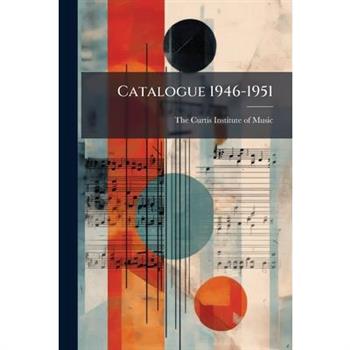
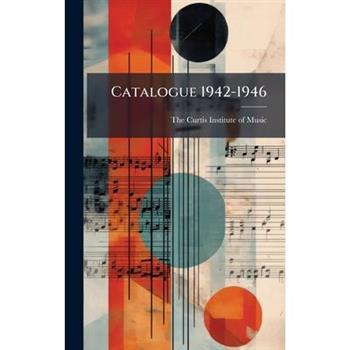
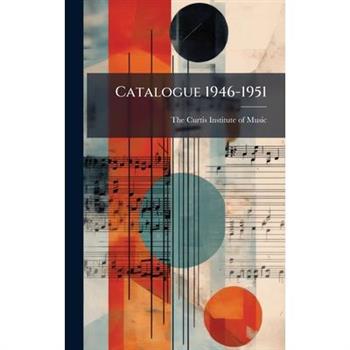
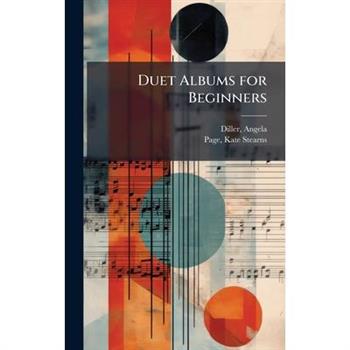
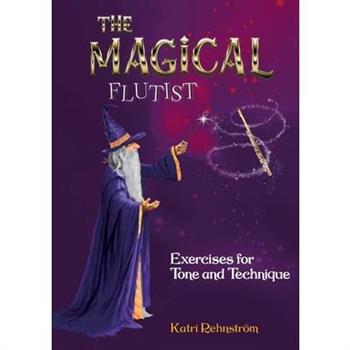
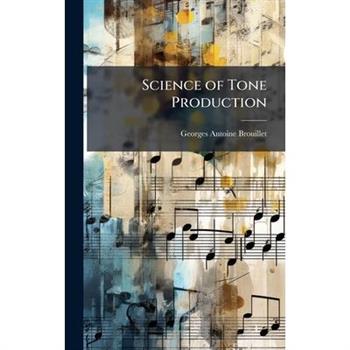
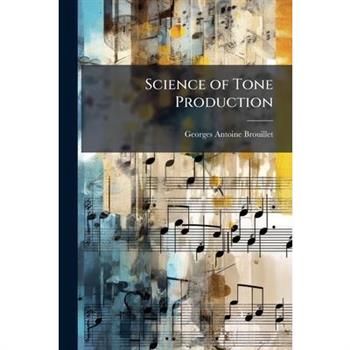


![[Catalog] [Catalog]](https://cdn.kingstone.com.tw/english/images/product/8511/9781024138511m.jpg?Q=e5135)
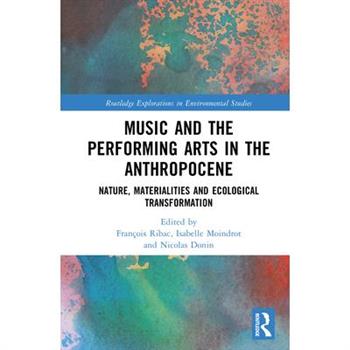
![[Catalog] [Catalog]](https://cdn.kingstone.com.tw/english/images/product/6241/9781024136241m.jpg?Q=073a5)
